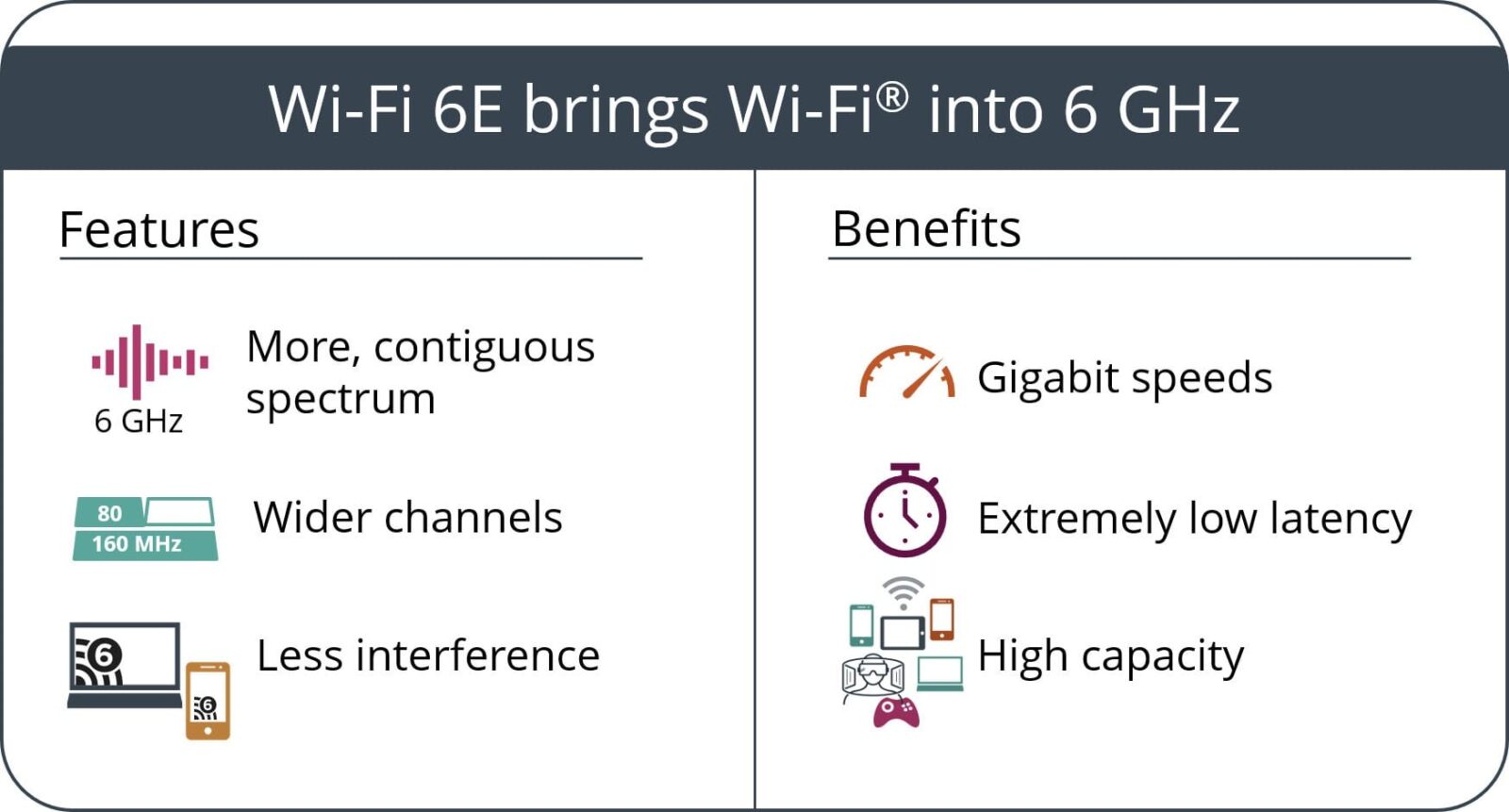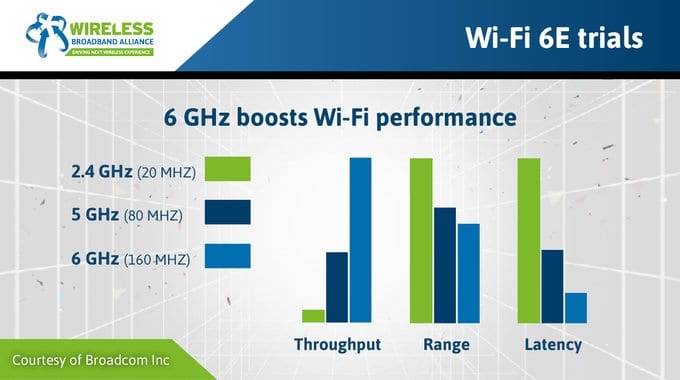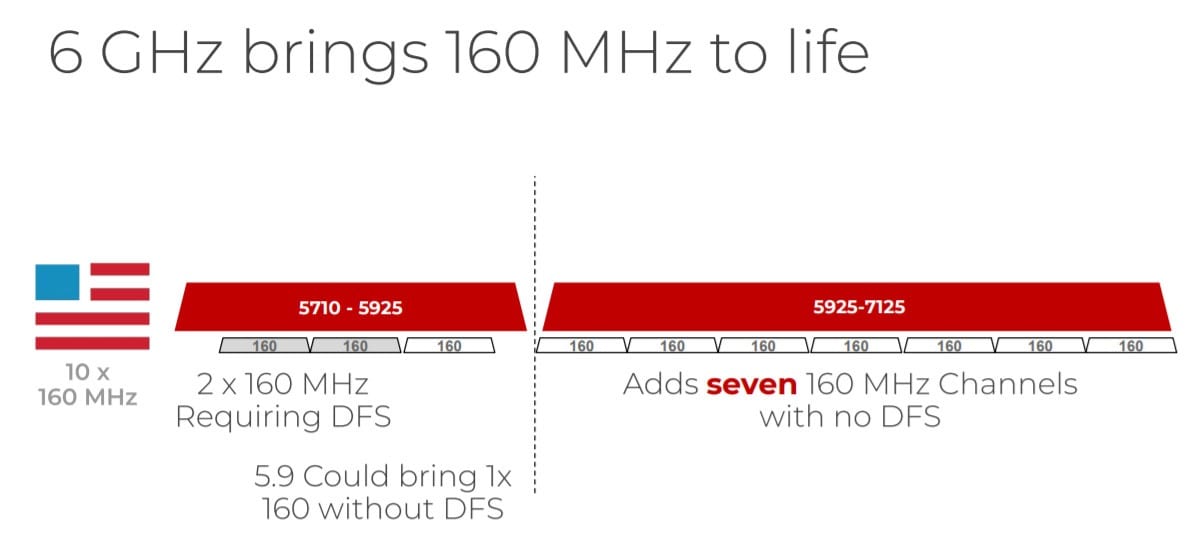The Federal Communications Commission (FCC) recently voted to open a whole new wireless spectrum to the public. This move is meant to increase the speed and bandwidth of the current WiFi standards, while also decreasing the latency. With the vote, the FCC has extended WiFi 6 into the 6 GHz (gigahertz) band for unlicensed use and created a new wireless standard called “WiFi 6E.”
What is the 6 GHz WiFi Spectrum Band?
For a long time, WiFi devices only used the 2.4 GHz and 5 GHz radio-frequency bands to communicate with each other. By opening the 6 GHz band, the FCC says it will more than double current WiFi speeds and expand current bandwidth by a factor of five.
The current standards require everyone to operate with around 400 MHz (megahertz) of spectrum. With so many new devices sharing the same old spectrums, it is causing a lot of traffic jams. Now, the FCC has allocated 1,200 MHz of radio-frequency spectrum on the 6 GHz band, which is nearly triple the bandwidth of the old spectrums put together.
Plus, unlike the old standards, the 6 GHz spectrum doesn’t have overlapping channels. Currently, there are only three non-overlapping 20 MHz channels in the 2.4 GHz spectrum. This means your WiFi signal has to compete with all the other smart home devices, microwaves, and other nearby WiFi signals in this spectrum. With the new 6 GHz spectrum, you will have a dedicated channel for your WiFi connections, which will make your WiFi signal stronger and more reliable.

By adding the new 6 GHz spectrum, the FCC is basically adding a new highway with wider lanes next to the old 2.4 GHz and 5 GHz lanes. This is expected to allow more internet traffic to flow at higher speeds. This is the biggest spectrum addition since the FCC opened up WiFi over 20 years ago.
If you want to know more about the difference between 2.4 GHz and 5 GHz bands, check out our article here.
What is WiFi 6E?
WiFi 6E is an extension of the current WiFi 6 standards. However, current WiFi 6 devices won’t work on the 6 GHz spectrum. That means you will need to buy a new router and a new laptop with WiFi 6E chips to use this new spectrum.
WiFi 6E devices are not expected to hit the market until the end of 2020 or the beginning of 2021, according to the WiFi Alliance. Then, you will need to make sure to look for devices that have a “WiFi 6E” label, not just a “WiFi 6” label.

“We expect initial Wi-Fi 6E products to enter the market this year, with the first Wi-Fi 6E access points available by the fourth quarter of 2020,” said Phil Solis, research director at the International Data Corporation. “We expect Wi-Fi 6E will gain momentum and see rapid 2021 adoption with more chipsets targeting flagship smartphones, PCs, TVs, and even VR devices.”
If you want to know more about WiFi 6, check out our article on what WiFi 6 is and what it does here.
WiFi 6E Speed and Latency
According to real-world tests conducted by the Wireless Broadband Alliance (WBA), WiFi 6E devices were able to reach speeds of 2 Gbps with consistent two-milliseconds latency connections. The tests showed this new WiFi technology is “comparable to 5G cellular service speeds.”

The only downside to the 6 GHz band is that it will have a much smaller range (or throughput) than 2.4 GHz and 5 GHz bands. That means this new WiFi technology is really designed for short-range connections, such as connections in the same room or home.
WiFi 6E Bandwidth
WiFi 6E is designed to address a bandwidth shortage that has been caused by the growing number of devices all trying to use the same bands. Specifically, the new band will provide 14 new 80 MHz channels and seven new non-overlapping 160 MHz channels.
The current WiFi channels in the 2.4 and 5 GHz range are mostly 20 MHz or 40 MHz wide. Together, they would only allow 2 160 MHz channels, which would have overlapping traffic anyway. These new wider channels in the 6 GHz range are needed for applications that use a lot of bandwidth to stream high-definition video, play games in virtual reality, and more.

These extra channels will provide more WiFi capacity than all the other bands put together. This means more WiFi devices will be supported at once without interfering with each other. This is especially helpful in highly congested areas. However, it will also allow more users in rural areas to access high-speed internet, too.
If you want to know more about WiFi channels, and how to change your WiFi channel, check out our guide here.


